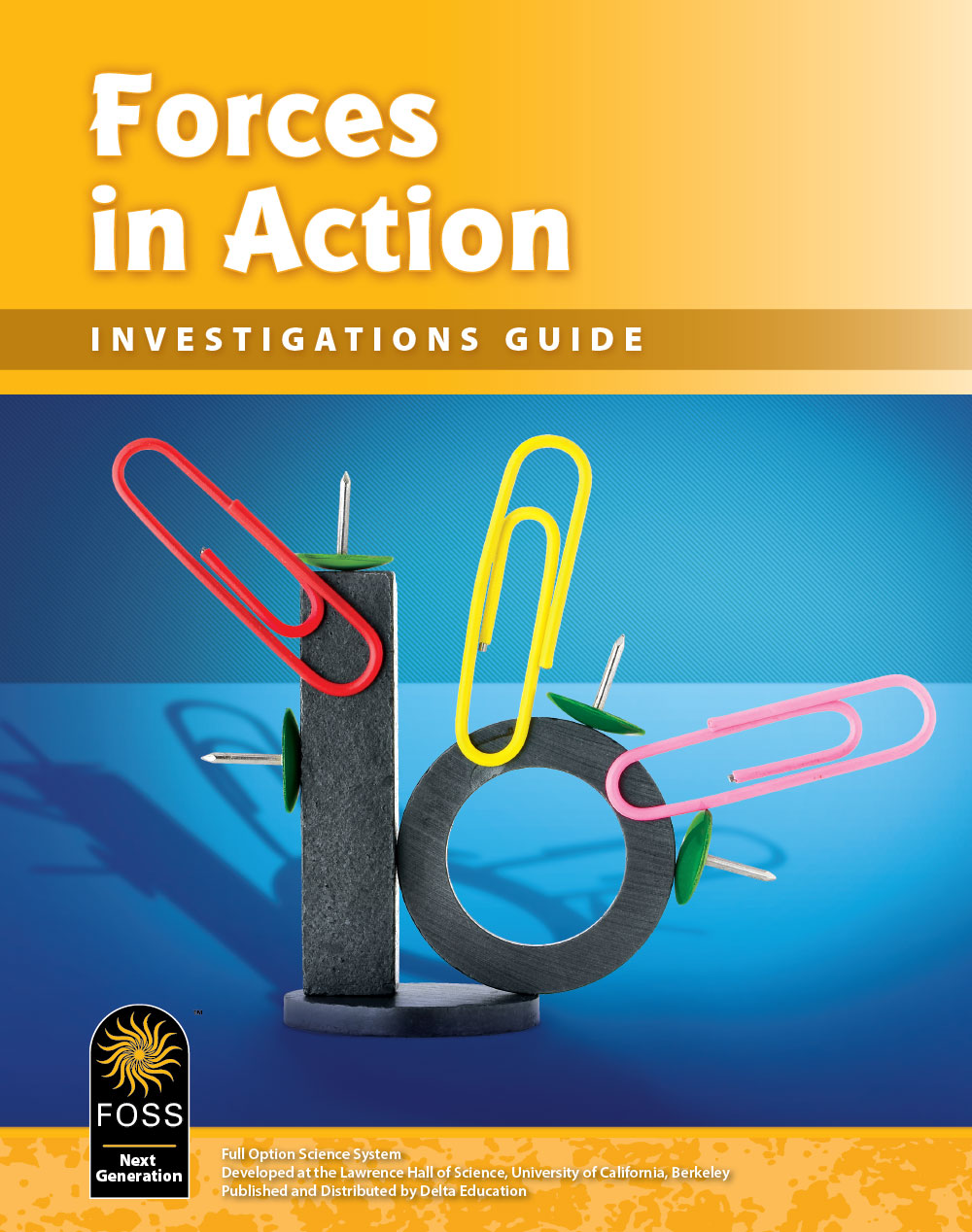FOSS Next Generation Forces in Action
STEM

Investigation 1
The phenomenon is rotation—students observe objects and systems that rotate and look for patterns in the ways they move. Students explore the variables that influence the spinning of a top and a zoomer. They explore the forces (pushes and pulls) that make tops and zoomers move, and engineer systems to meet challenges. They observe the force of gravity causing objects to fall.
Investigation 2
The phenomenon is rolling—students observe objects and systems that roll and look for patterns that can be used to predict motion. Students investigate rolling objects—wheels and spheres— and describe change in position over time. They gain more experience with gravity causing objects to fall to the ground. Students use flexible marble runways to observe an object’s change of position. They engineer systems to meet challenges.
Investigation 3
The phenomenon is magnetic interaction—students observe the effects of magnetic force. They work with magnets and find that two magnets either attract or repel one another, depending on their orientation (force at a distance). They investigate what materials stick to a magnet, make predictions, test, and record their results. They read about how magnets are used to solve problems, then define a problem of their own and design a solution.
Investigation 4
The phenomenon is balance—students observe the effects of forces on toys and other systems that cause a stable position. Students explore numerous ways to balance various objects by positioning counterweights (clothespins) in strategic locations. They define problems and design solutions to the balancing problems.